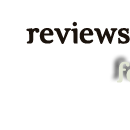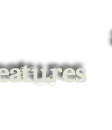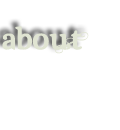
Published September, 2010.
These days you can't swing an undead lycanthrope without hitting a Minion of Evil. They're everywhere - TV, film, the basement . . . right behind you! It's never been more important to know what you can do to keep them at bay.
From today's foremost experts on nightmares come to life, this indispensable guide identifies and described mankind's enemies - supernatural beasts, ghosts, vampires, serial killers, etc. - and unearths effective, time-proven responses to each horrific threat.
- Separate fact from fiction, the deadly from the merely creepy.
- Learn when to stand your ground and when to run screaming for your life.
- Determine which monster-specific heroes to call and their likelihood of success.
Whether we're talking ancient vampire hunters or modern-day FBI profilers, it's good to know someone's got your back in the eternal struggle between Good and Evil. And this book, with over fifty illustrations as well as commentary from luminaries like filmmaker John Carpenter, author Peter Straub, and the legendary Stan Lee, provides all the information and reassurance you need to sleep soundly at night. Just not too soundly. (book back blurb)
What a thoroughly amazing book. From the definition of evil to its incarnates and how to fight it in its various forms, Wanted Undead or Alive has it all, with pictures to spare. It's a textbook on fighting evil without the boring text. From Dracula to Ted Bundy, Maberry and Bashman don't leave any stone unturned when it comes to seeking out evil and unearthing the heroes that smite them.
And don't think we're limited to your standard film and literature fare. Oh no. Take that huge section on comics for example. Not only do you get a timeline of great comic heroes, but you get to see the trials and tribulations the arena went through in trying to bring those masters, and monsters, to life. See, things got too real for people in the comic world and the Senate, yes, the Senate, initiated the Comic Code of Authority which is, in fact, still in force today although not strictly adhered to anymore. Go ahead and read the restrictions that comic artists and authors had when it came to developing and writing their comics -
As a result of the 1950s Senate hearings and protests from vocal but deeply misinformed critics, comic book publishers were bullied into censoring their own content. The Comics Magazine Association of America (CMAA) was established and instituted the Comics Code Authority (CCA). In a stunning move to ignore the First Amendment, the Comics Code seal of approval would only be given to a new wave of sanitized comics. Here's what the code specified:
- Crimes shall never be presented in such a way as to create sympathy for the criminal, to promote distrust of the forces of law and justice, or to inspire others with a desire to imitate criminals.
- If crime is depicted it shall be as a sordid and unpleasant activity.
- Criminals shall not be presented so as to be rendered glamorous or to occupy a position that creates a desire for emulation.
- In every instance good shall triumph over evil and the criminal punished for his misdeeds.
- Scenes of excessive violence shall be prohibited. Scenes of brutal torture, excessive and unnecessary knife and gunplay, physical agony, gory, and gruesome crime shall be eliminated.
- No comic magazine shall use the word horror or terror in its title.
- All scenes of horror, excessive bloodshed, gory or gruesome crimes, depravity, lust, sadism, masochism shall not be permitted.
- All lurid, unsavory, gruesome illustrations shall be eliminated.
- Inclusion of stories dealing with evil shall be used or shall be published only where the intent is to illustrate a moral issue and in no case shall evil be presented alluringly, not so as to injure the sensibilities of the reader.
- Scenes dealing with, or instruments associated with walking dead, torture, vampires and vampirism, ghouls, cannibalism, and werewolfism are prohibited.
- Profanity, obscenity, smut, vulgarity, or words or symbols that have acquired undesirable meanings are forbidden.
- Nudity in any form is prohibited, as is indecent or undue exposure.
- Suggestive and salacious illustration or suggestive posture is unacceptable.
- Females shall be drawn realistically without exaggeration of any physical qualities.
- Illicit sex relations are neither to be hinted at nor portrayed. Violent love scenes as well as sexual abnormalities are unacceptable.
- Seduction and rape shall never be shown or suggested.
- Sex perversion or any inference to same is strictly forbidden.
- Nudity with meretricious purpose and salacious postures shall not be permitted in the advertising of any product, clothed figures shall never be presented in such a way as to be offensive or contrary to good taste or morals. (295-296)
So you think authors of today have it bad? Try having to write within those confines. Comic book artists and authors of yore were the heroes fighting the evil of misinformation, lack of education and just a sheer lack of intelligence. Of course, it wasn't too long before the comics started fighting back, starting with Stan Lee and Marvel. They pretty much said 'stick my fist' to the code and the rest started to follow. Eventually.
So whether those evils are the ignorant masses trying to stifle the First Amendment, some ghoul trying to eat your face or your run-of-the-mill serial killer trying to do the same, Maberry and Bashman have a hero (or antihero) to counter those guys. The amount of research gone into formulating this novel is amazing. From film and literature greats to FBI profilers and artists that let their artwork speak for themselves, everyone has a different take on what's evil and what's needed to fight that evil.
While the monsters under the bed and creeps on the pages and screens may give you nightmares, I don't think there's anything more truly terrifying than the last portion of this book detailing real life evil in the likes of notable serial killers. Some of the details are rather graphic and I'd recommend not reading that particular part while eating. I made that mistake and, well, let's just say I lost my appetite.
If you're a writer, you'll definitely want this mini-encyclopedia in your collection for GvE reference. It will certainly broaden your scope to avenues that you probably wouldn't think of. The unconventional along with the conventional is highlighted between these blood red pages and you'll get sucked right in. Hopefully you'll be able to get back out again. If you're thrifty enough and take note of the tips doled out in these pages, you'll be sure to walk away from this sight relatively unscathed. Relatively.
Contest Time!!!
Want to win a copy? Just fill out the form below for your chance to win. Open to US residents 13 years of age and older only. One entry per person per email address. Duplicate entries will be deleted. The question must be answered in order to qualify. Entry gives me permission to post your answers on this website. Contest ends November 1st at midnight EST.
 Published September, 2010.
Published September, 2010.

















